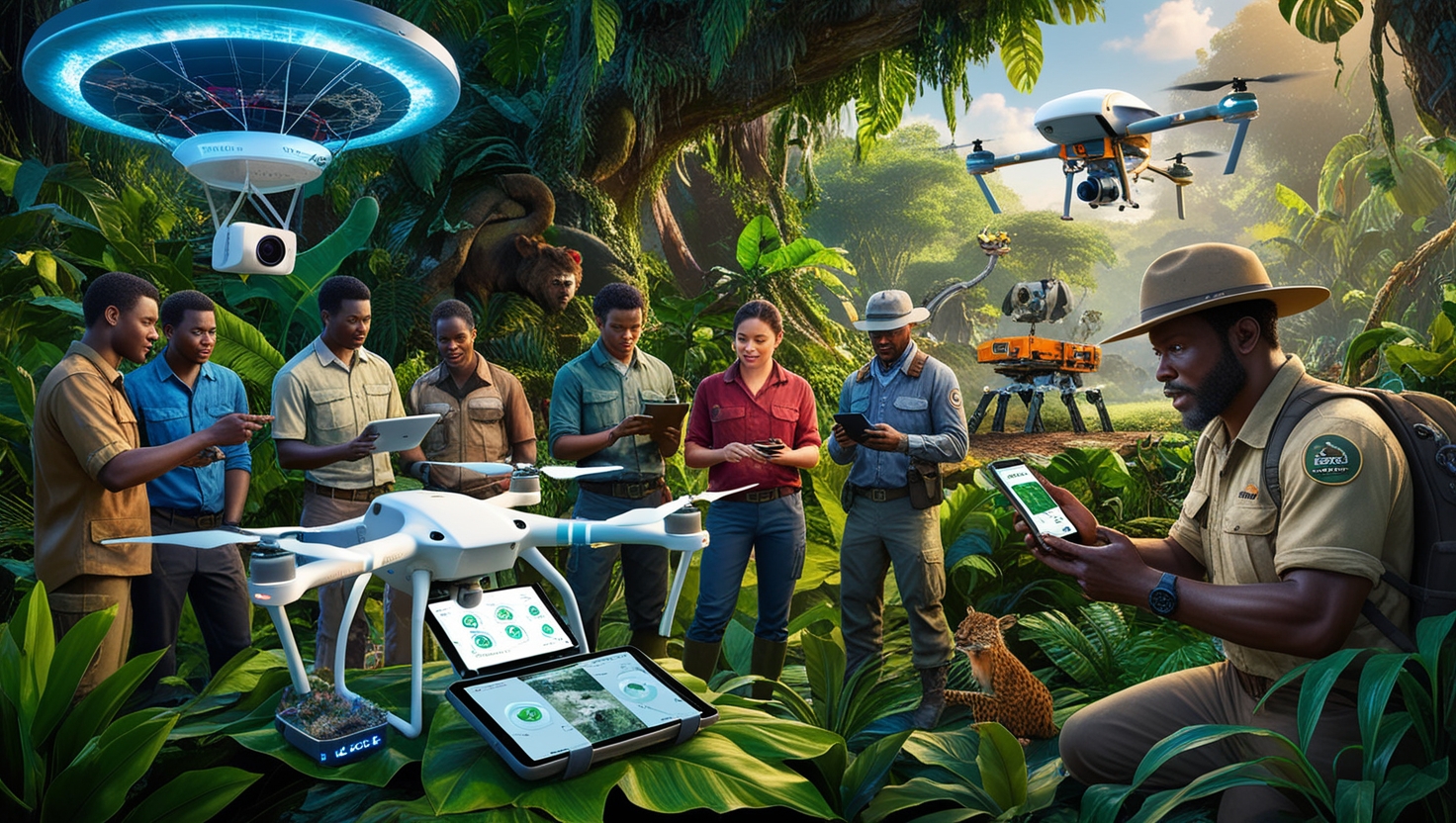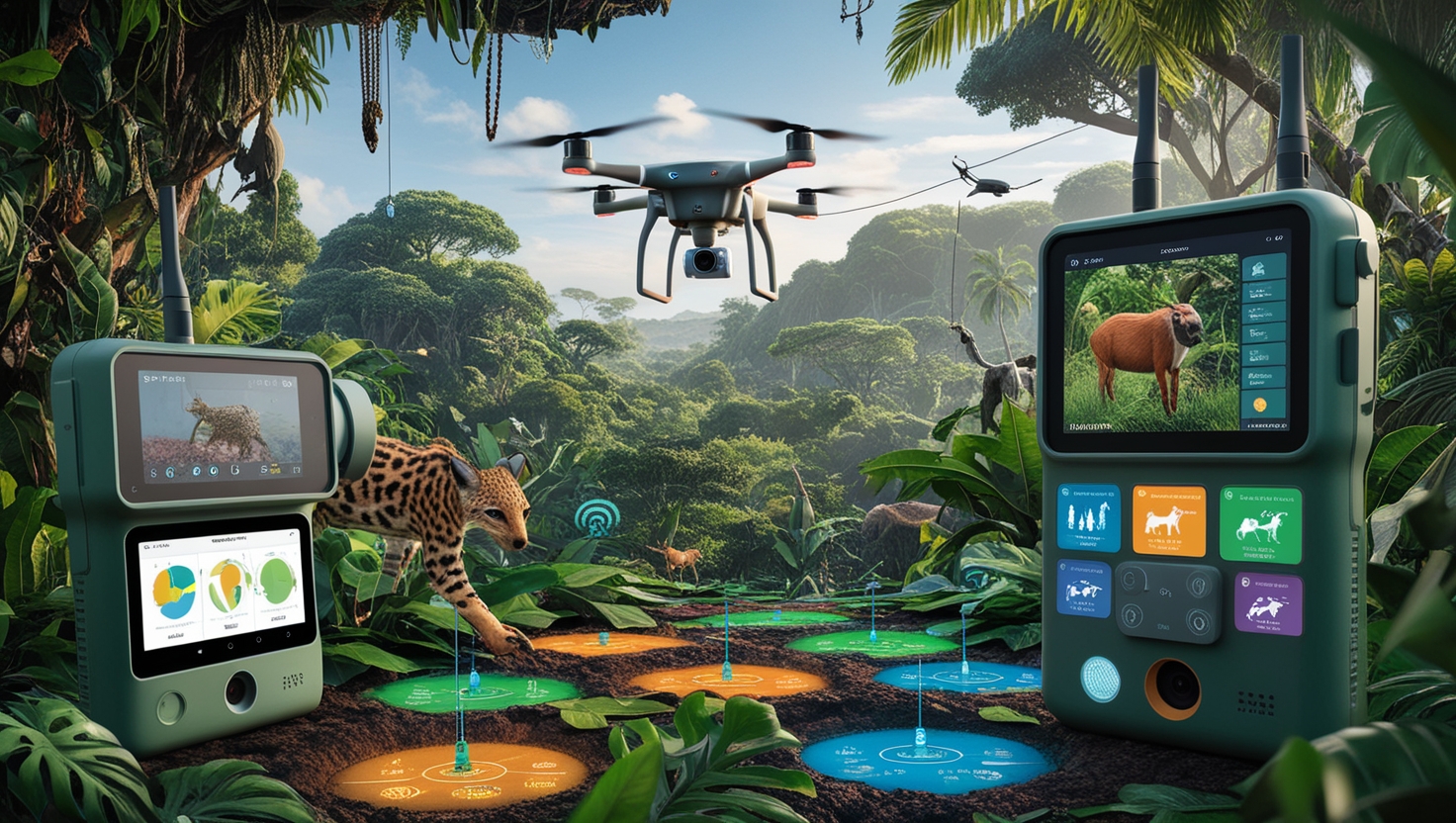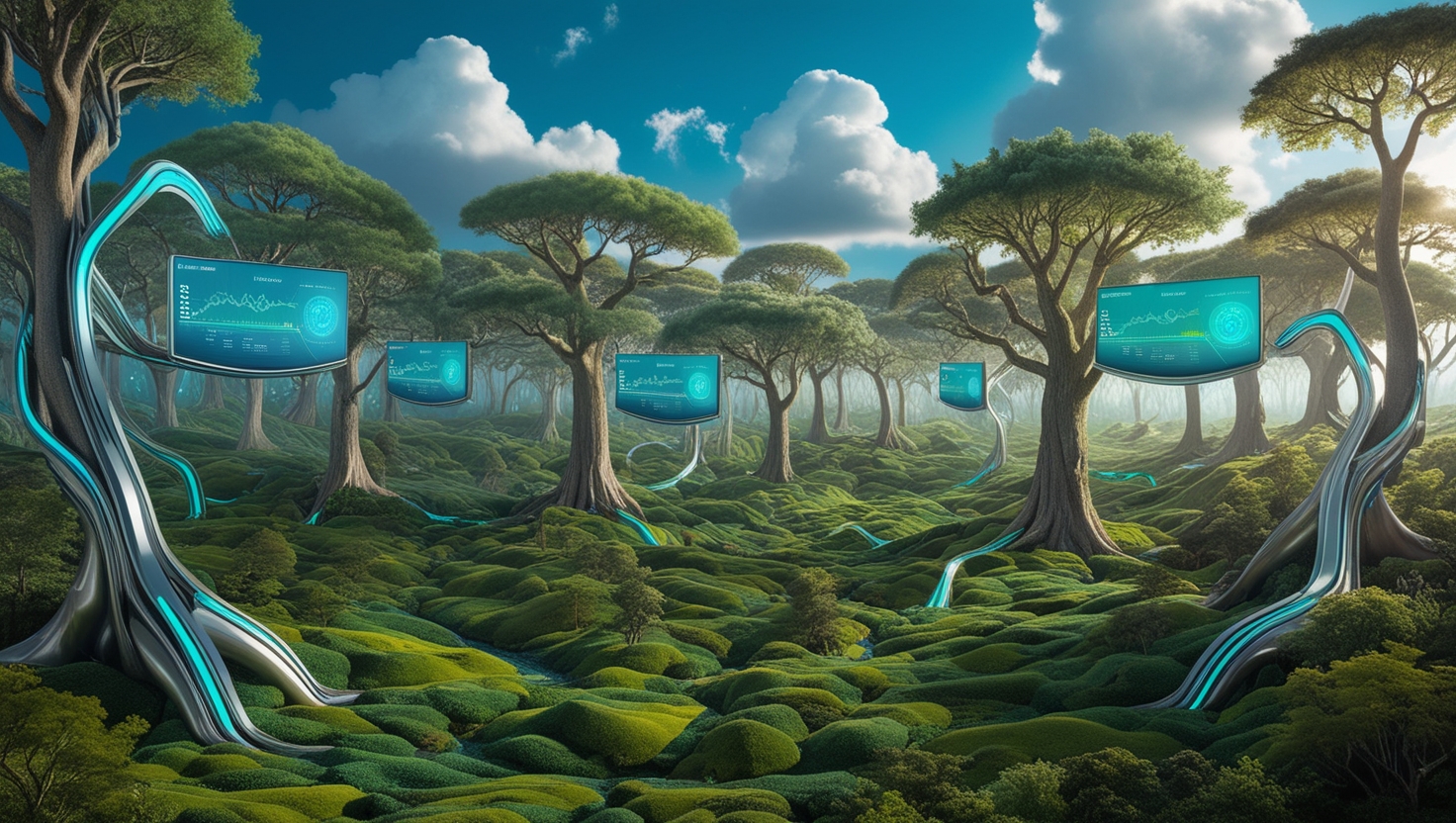
AI in wildlife conservation is a demand of our time because over half of all animal species have disappeared in the past 50 years and now it is easier to use tools such as machine learning and drones to track endangered species, nourish and protect eco-systems and combat poaching.
The areas which have implemented ai surveillance have recorded a tendency of having reduced poaching by 96%. In this way, AI is redefining how conservation actually happens and significantly improving rangers’ ability to prevent crime. This has remained the case as these technologies are increasingly providing fresh hope in the preservation of our globe’s endangered species.
Table of Contents
ToggleThe Impact of Artificial Intelligence:
Redefining Wildlife Conservation
New technology such as artificial intelligence (AI) is now in the process of revolutionizing wildlife conservation efforts through offering soluble solutions to some of the biggest problems facing wildlife today. With current estimates of 60% of species having been lost in the last fifty years the need for conservation efforts has never been so great. Previous methods are inadequate to address perils such as hunting, loss of habitat and global warming in the contemporary world.
The Urgency of Conservation Efforts in Wildlife Conservation
Primates are currently endangered due to the present state of conservation currently requires that urgent actions be taken. On a yearly basis, millions of species are at risk of extinction, thanks to human beings making the issue of conservation a very sensitive one. Some of the AI tools which can support these efforts include data analysis and prediction, which help conshiroto take fast and informed decisions. With the help of such systems, we come up with preventive solutions which are even capable of preserving species and ecosystems.
The Power of AI-Driven Tools in Wildlife Conservation
- Unprecedented Insights: With the help of AI technologies it is possible to gain detailed understanding of animals’ behavior, and conditions in their natural environment, so that better methods of their protection can be adopted.
- Drone Monitoring: Cultivation of drones enhances the speed at which endangered species are monitored and the overall studies conducted on the species.
- Data Analysis: AI helps to make huge ecological data more manageable so that conservationists use it to make decisions supported by which they have huge data information.
- Enhanced Decision-Making: Thanks to AI it is possible to efficiently evaluate topological properties of environment and instantly react on potential threats to the wildlife.
- Essential Ally in Biodiversity: Artificial Intelligence is fast emerging as an important ally in the global campaign to save priceless bionetworks for future generations.

AI is Used to Monitor Endangered Species
Technologies such as Artificial intelligence (AI) has been instrumental in offering new methods for tracking and collecting data on endangered species of animals. With camera traps, sensors or drones, the researchers have a better understanding of the population density of the animals and where they exist.
Monitoring Endangered Species with AI
Camera Traps: Camera traps outfitted with artificial intelligence take motion activated photographs of animals present in the area. It enables the researchers to quantify some of the species’ population characteristics as well as their interactions in their natural community structures.
Environmental Sensors: Some are embedded real time monitors at different ecosystems to monitor data like temperature, humidity and moisture of its surrounding soil.AI processes such data to determine effects of modification of habitats on endangered species.
Drones: Due to this wildlife conservationists use drones with high-end cameras and AI software to survey large parts of the terrains.With the help of these drones, they can monitor the movements of animals,determine the areas of degraded habitats, and even notice some prohibited actions such as poaching.

AI’s Strength of Identifying and
Distinction between Species
The artificial intelligence has been greatly applied in some aspects of wildlife conservation especially in the aspect of identification and differentiation of species with high interjection. First of all, specific features of a certain species or individual animal, such as peculiarities of coloration and other relevant biological signs, are identified by artificial intelligence tools, which in turn improves observation and preservation of endangered species.
Incredibly Accurate for Species Identification
Image Recognition Technology: AI uses enhanced image recognition pattern that can see thousands of images within a short period of time. This technology feeds on huge data sets whereby after capturing the specimens, it has a capability of distinguishing one species from the other depending on color, size or even shape.
Individual Identification: In addition to species identification, AI can also identify between individual animals, using the features of unique patterns or spots. For example, it can recognize the faces of leopards by shapes of spots or elephants by shapes of ears and size of tusks which opens the possibility of following the activity of particular animals with time.
Machine Learning Models: Machine learning models undergo enhancement as and when they are trained on new data. Many of them can simulate behaviors and movements as far as historical data of animal populations are concerned, which all in all helps with conservation.
Automated Data Processing: Camera traps can collect a large amount of images, and with the help of AI, those pictures can be identified much faster. It makes it easier to watch for changes and make faster response to conservation needs.

In What Ways Does AI Help To Curb Poaching?
Using and developing AI techniques helps to improve the existing possibilities of identifying unlawful actions, detecting poachers, and providing immediate notifications to the authorities. By incorporating some of the best technology personnel with the rangers and wildlife protection units, AI has greatly contributed in combating the rates of extermination of endangered species in wildlife.
AI’s Role in Identifying Illegal Activity
Real-Time Surveillance: AI-powered drones and camera traps make constant observations of the habitats, identifying people and reacting rapidly to threats.
Pattern Recognition: AI uses previous data about poaching history to find out the areas of most vulnerability, thus, the authorities will be able to target their patrols on such areas.
Tracking Poachers
Movement Tracking: Roo heavily armed UAVs monitor the movement of poachers and communicate the coordinates to rangers to help them apprehend the poachers before they get close to the endangered species.
Integration with GPS and Sensors: AI analyzes GPS data and those from the surroundings to detect poacher activities and animal migration; the gathered information will help rangers to devise adequate responses.
Alerting Authorities
Automated Alerts: In addition, AI also issues real-time notifications to rangers to permit an immediate response to poachers’ unlawful activities.
Data Sharing: Meaning it compiles poaching information of and for law enforcement agencies to increase inter–agency synergy on threat counteractions.
Collaborating with Ranger Teams and Wildlife Units
Collaborative Efforts: Technology and especially AI improves the ways in which conservationists work with the ranger teams and other police or protection units. The rangers also employ the use of mobile devices for the collection of timely information and alarms to make appropriate decisions.
Training and Support: Organizations working with local rangers provide instructions about the use of AI tools; thereby providing them with the basis for a functional leverage strategy for AI.
Community Engagement: AI activates the community in conservation by encouraging the understanding between rangers and the locals and empowering them to protect wildlife.

AI and Predictive Analytics in Poaching Prevention
It also Sullivan improve wildlife protection because an AI system can analyse the data and predict the areas where poaching is likely to take place. Data collected are historical records, satellites, and reports from the rangers are used to make models which AI recognizes regions that can be threatened.
These models quantify risk levels according to the likelihood of human encroachment into the wildlife’s territory, to help conservation units map out areas in desperate need of patrols. The real-time ability can be used to alter the strategies for implementation once conditions are noted.
Engaging the communities also leads to involvement in the assessment and protection of endangered species hence preventing poaching. In general, it can be stated that predictive analytics enhances effectiveness of wildlife protection efforts by a great extend.

AI for Habitat and Ecosystem Protection
Habitat Monitoring: AI technologies can monitor habitats through satellite imaging and drones for a long time without the need for alternative sources of energy. They incorporate features that study shifts in land cover and vegetation as well as the general well-being of ecosystems.
- Detects deforestation, pollution, and habitat degradation in real time.
- Provides data for conservation efforts and helps identify areas needing restoration.
Biodiversity Assessment: The ecological data is analyzed with the help of AI algorithms; they evaluate the levels of biodiversity in different ecosystems. The findings of this study inform conservation efforts and species conservation.
- Identifies and tracks endangered species populations using camera traps and acoustic monitoring.
- Helps in understanding species interactions and ecosystem dynamics for informed decision-making.
Predictive Modeling: AI can estimate future changes of habitats and ecosystems depending on tendencies and climate. It also has a bearing in thinking ahead for conservation measures.
- Models potential impacts of climate change, urbanization, and invasive species on ecosystems.

AI-Assisted Breeding Programs for
Endangered Species
AI is crucial for sustaining breeding programmes for endangered species because it utilizes data to address issues of genetic variation as well as increasing successful animal survival. Using genetic data from individual animal, AI can detect patterns of genetic difference and association of population. It allows conservationist to pick breeding pairs that will help to maintain high levels of genetic variability, therefore minimizing in-breeding and increasing the general well being of the species.
- Genetic Variation Analysis: AI systems assess genetic data to understand variations within endangered species.
- Optimal Pairing: By identifying suitable breeding pairs, AI minimizes the chances of inbreeding, leading to healthier offspring.

AI in Conservation Policy and Global Collaboration
AI is being incorporated into conservation policy through the provision of data sets at the global level to inform governments, conservationists and international policy making. AI can use big data of geospatial origin like satellite photos, scattered data from ecological surveys and chronicles and predict cases of biodiversity depletion, habitat destruction and species disappearance. The various insights enable formulation of sound policies whose implementation brings about practical and efficient conservation solutions to emerging problems.
- Data Analysis for Policy Development: AI analyzes vast amounts of environmental data to highlight critical conservation issues.
- Evidence-Based Recommendations: Insights generated by AI inform policymakers about effective strategies for habitat preservation and species protection.

AI’s Role in Shaping Future Wildlife Policies
Today, AI data is proliferating the formation of new policies intended for the better conservation of wildlife and their habitats making conservation a priority in the international realm. In today’s world technology in the form of artificial intelligence can analyze large amounts of ecological data to locate the areas need protection the most. This was possible to do so owing to this capability that helped the governments and the international bodies to direct their spending on this policy careful, selective and result oriented.
- Targeted Conservation Efforts: AI helps identify key habitats and species at risk, allowing for focused policy development.
- Resource Allocation: Data-driven insights inform governments on where to direct funding and resources for maximum effect.

Conclusion: A Future Shaped by AI and Conservation
Five major ways that AI is contributing to the improvement of the systems used to protect endangered species and their habitats are described in this section. It detects some areas where poaching often occurs and can prevent the act by using statistical model analysis. AI also enhances surveillance of populations, and increases genetic stock by well-organized breeding techniques, invariably helps worldwide conservation efforts.
- Proactive Poaching Prevention: AI identifies and mitigates poaching risks.
- Enhanced Monitoring and Breeding: AI optimizes breeding for healthier populations.
FAQ
How is AI used in wildlife conservation?
AI monitors endangered species, predicts poaching hotspots, analyzes genetic data for breeding, and informs conservation policies with real-time data.
What are the benefits of using AI in conservation efforts?
AI enhances monitoring, prevents poaching, improves genetic management, increases efficiency, and fosters international collaboration.
How does AI help prevent poaching?
AI analyzes data to identify poaching hotspots and uses drones and cameras to detect unusual activities, enabling quick responses.
Can AI improve breeding programs for endangered species?
Yes, AI analyzes genetic data to ensure diversity and healthy populations, optimizing breeding pair selections for better survival rates.
How does AI influence global conservation policies?
AI provides data-driven insights that inform decision-making, prioritize wildlife protection, and promote collaboration among stakeholders.




